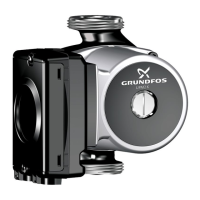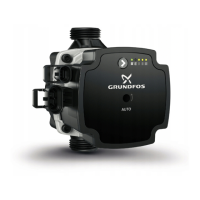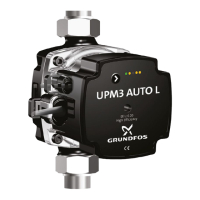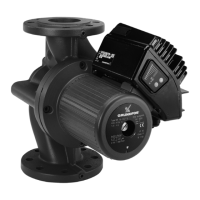Control mode and signals
10
Medium UPM
5
5. Control mode and signals
Control principles
Some medium UPM pumps are controlled via a digital
low-voltage pulse-width modulation (PWM) signal,
which means that the speed of rotation depends on the
input signal. The speed changes as a function of the
input profile. These communication signals are
standardised in the VDMA Einheitsblatt 24244 "Wet
runner circulating pumps - Specification of PWM
control signals".
Control signals
Digital low-voltage PWM signal
The square-wave PWM signal is designed for a 100 to
4,000 Hz frequency range. The PWM signal is used to
select the speed (speed command) and as feedback
signal. The PWM frequency on the feedback signal is
fixed at 75 Hz in the pump.
Duty cycle
d % = 100 x t/T
Example
Fig. 4 PWM signal
Interface
The Medium UPM PWM interface consists of an
electronic part connecting the external control signal to
the pump. The interface translates the external signal
into a signal type that the microprocessor can
understand.
In addition, the interface ensures that the user cannot
get into contact with dangerous voltage if touching the
signal wires when power is connected to the pump.
Note: "Signal ref." is a signal reference with no
connection to protective earth.
Fig. 5 Schematic drawing, interface
Example Rating
T = 2 ms (500 Hz) U
iH
= 4-24 V
t = 0.6 ms U
iL
≤ 1 V
d % = 100 x 0.6 / 2 = 30 % I
iH
= 10 mA
TM04 9911 0211
Abbreviation Description
T Period of time [sec.]
d Duty cycle [t/T]
U
iH
High-level input voltage
U
iL
Low-level input voltage
I
iH
High-level input current
TM06 0787 0914
5
9
S
5
%&%
%&%
36
&1<)
N
N
PWM output
PWM input
Signal ref.
Galvanic isolation
Pump electronics

